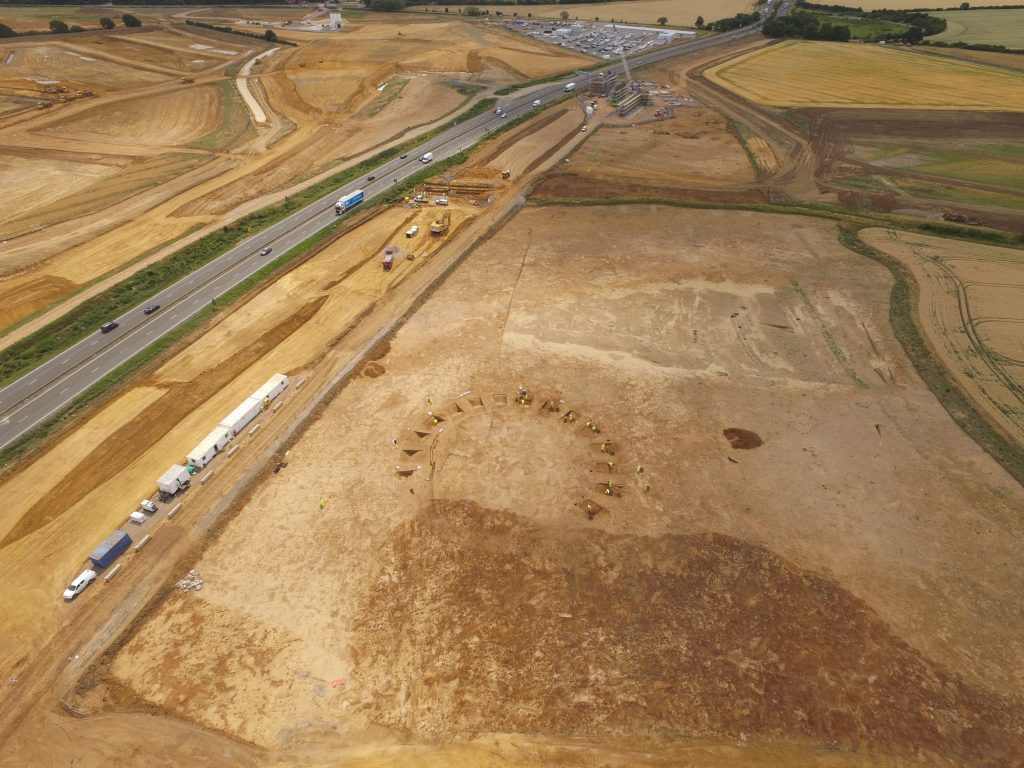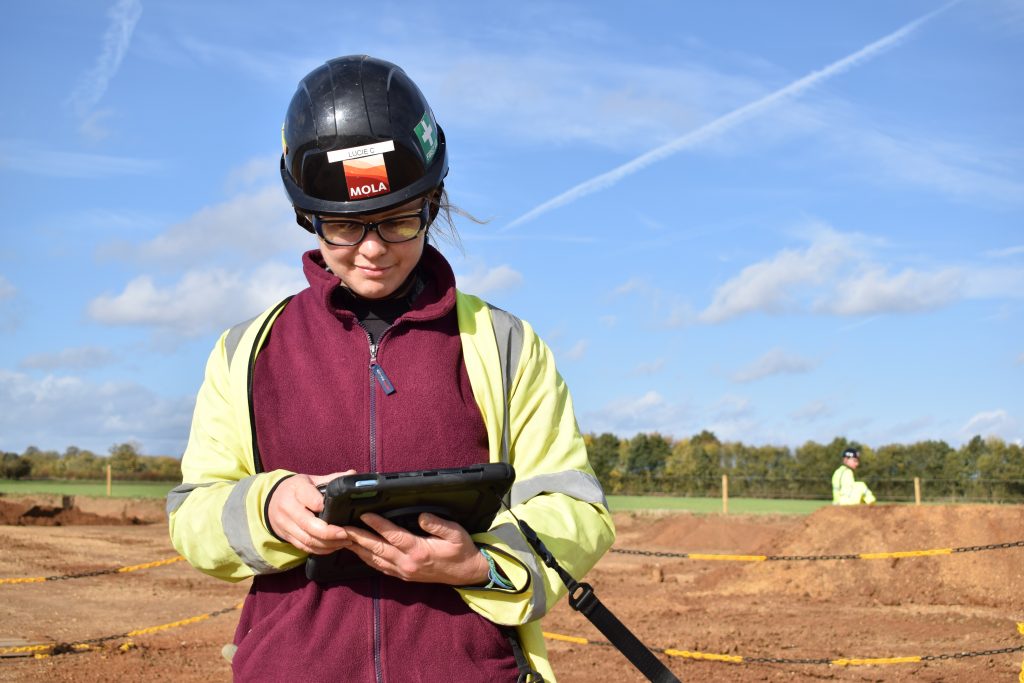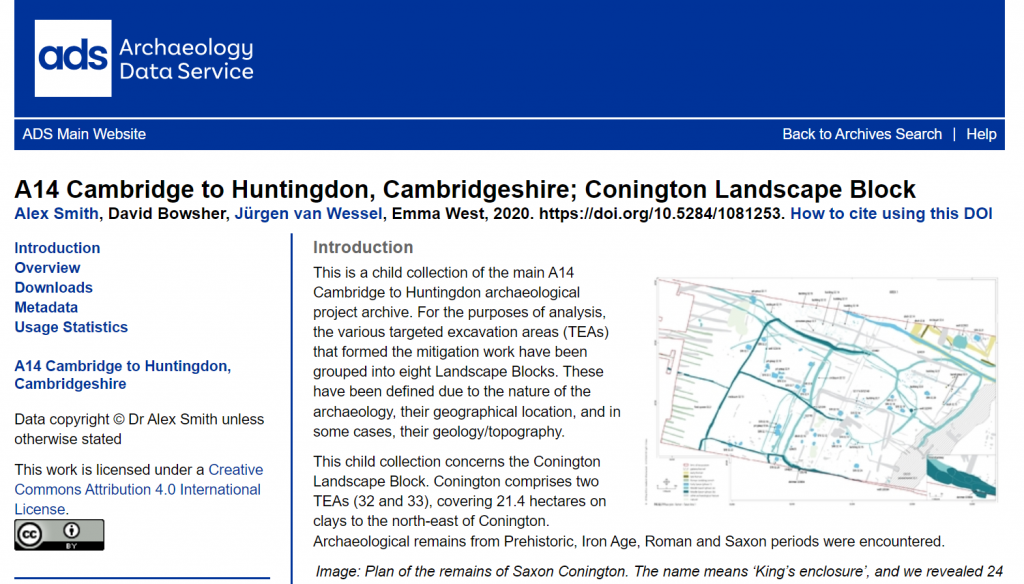On the National Highways A14 Cambridge to Huntingdon Improvement scheme, we excavated hundreds of acres of land, recovered thousands of artefacts, and took over 100,000 photographs – but where does all the information go?

Drone photo of archaeologists excavating on the A14
The answer is archives! A site archive is one of the most important parts of any archaeological project. Everything is recorded and stored for future use and research, from written records to drawings, photographs to finds. Usually, the archive is split up into three parts: paper (reports and other written records), physical (finds) and digital. This blog explores the digital archive.
A digital archive is all the born-digital records from the project. These include site surveys, photographs, reports, and databases. From the start of the project to the final report and publications, these are all are carefully organised by our archival team.
For many projects, including the A14, everything found on site is recorded on paper. Important paper records, such as context sheets and site drawings need to be included in the digital archive, so these records must be digitised. This usually includes scanning the context sheets, site registers and drawings, as well as data entry.
But as technology advances, many archaeological companies, including MOLA and Headland, are moving away from paper records and work with specially developed apps instead! This is revolutionising how archaeologists gather and use data from sites, as well as helping us become a more sustainable industry. Our archaeologists use tablets on site, making their findings digital data as they happen. Not only does this save a huge amount of paper, it also saves a lot of time. Anyone working on the project can access the latest finds from the excavations at any time, whether they are working on site, in finds processing, or back in the office. And no-one has to scan in thousands of recording and context sheets!

MOLA archaeologist using tablet to record on-site
So where can you see and search digital archives? For the A14 scheme, our digital archive will be deposited with the Archaeological Data Service (ADS). The ADS is the leading digital repository in the UK, and everything uploaded there is open access. This means it is accessible to anyone.

The A14 digital archive homepage
Accessibility is the key benefit of digital archives. Physical archives of finds from archaeological excavations are often stored in museums. These can be seen by researchers, but there are challenges such as visiting costs and physical access to archives, especially for people with additional access requirements.
In comparison, digital archives can be accessed by anyone with the internet, for example at public libraries, so they open a lot more doors and opportunities for people to engage with heritage and archaeology from across the country. What we find today could inspire someone’s future research or fuel your interest in local history. All the archaeological knowledge, whether it’s academic papers, press releases, a tweet, or even video games, has its roots in site archives!
And the discoveries don’t stop here… There are thousands of reports of the ADS just waiting for you to take a look. Make sure you check back when the A14 digital archive is fully deposited, we can’t wait for you to see the scale of what we found!
Click here to visit the A14 Digital Archive
Join us on our journey!
#A14Archaeology
Find out more about the A14C2H improvement scheme
The archaeological programme for the Cambridge to Huntingdon National Highways scheme is being carried out by A14 Integrated Delivery Team on behalf of National Highways.
0 Comments
Leave A Comment